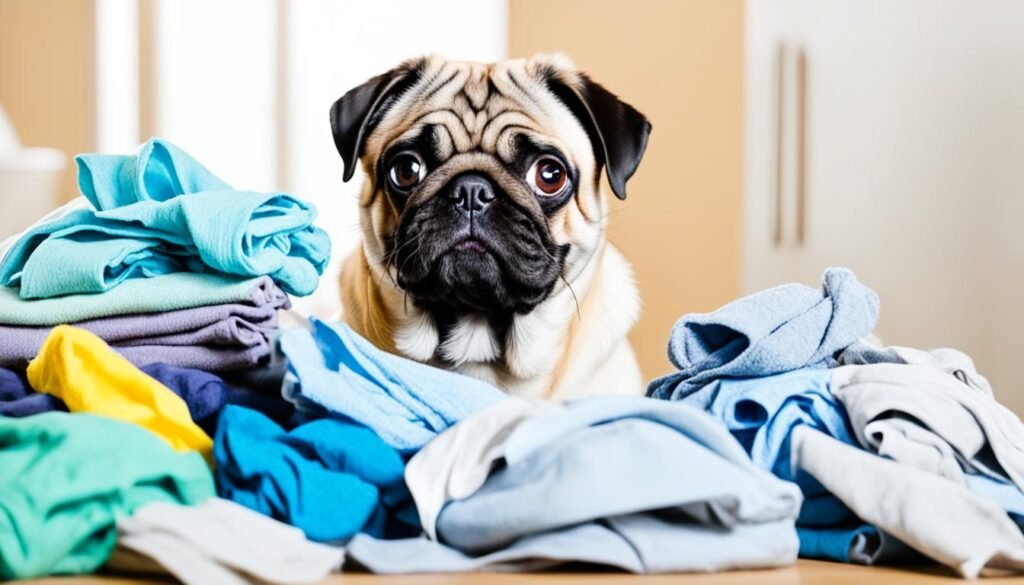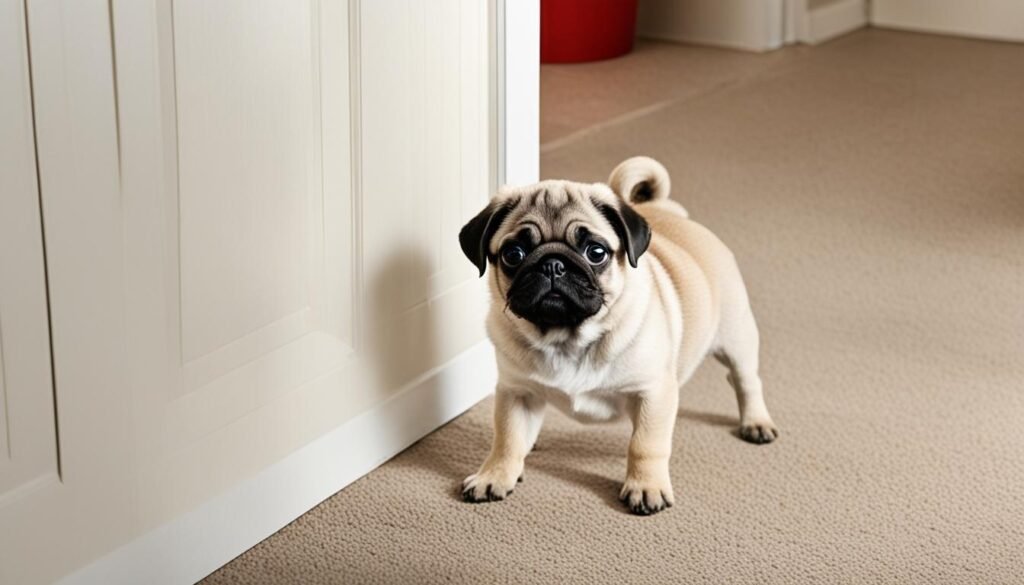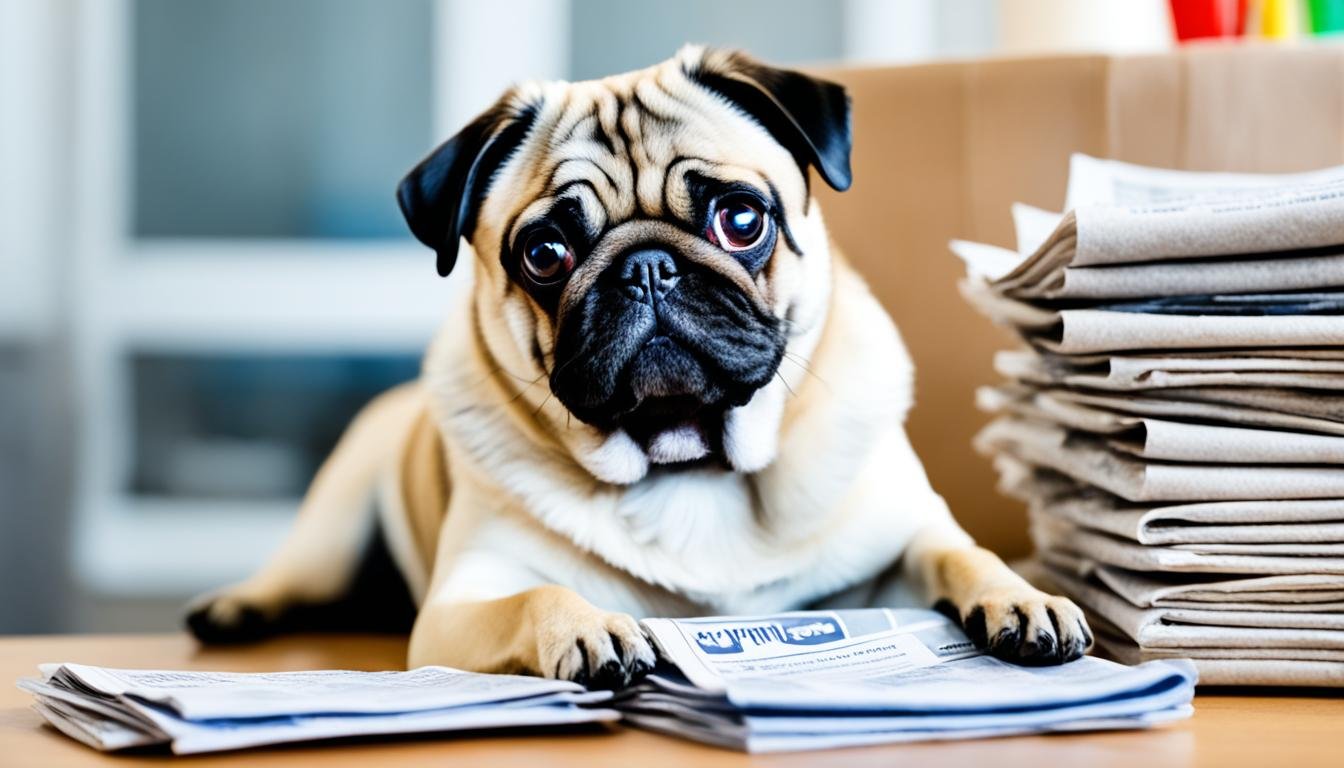How to avoid housebreaking challenges with Pugs
Have you ever wondered why some Pugs are easy to house train while others struggle? It’s important to know how this breed thinks to make housebreaking easier. Pugs are smart and loving, but they can be a bit stubborn. This makes house training harder.
Learning how to train a pug has made housebreaking fun for me. By understanding what makes Pugs tick and using the right methods, I’ve made my Pug a happy and well-trained friend.
Understanding Pug Breed Traits
Pugs have traits that can be both fun and tough for owners. Their sweet nature brings joy but also some challenges, like house training. Knowing about these traits helps make training easier, especially with potty training.
Why Pugs Can Be Challenging to House Train
Why Pugs can be challenging to house train is because of their small bladders. They need to go outside often to avoid accidents. Their playful and curious nature can also make them miss the signs to go outside.
Young Pugs under 12 weeks may not have strong muscles to control their bladders. This makes house training harder.
Recognizing Pug Intelligence and Stubbornness
Pugs are smart, but they can be stubborn. This stubbornness makes training tricky. Owners need to be patient and consistent with them.
Knowing this helps me train my pug better. It makes training smoother for both of us.

How to Avoid Housebreaking Challenges with Pugs
House training a Pug needs careful planning for easy progress. It’s important to keep a regular schedule and watch your dog closely. This helps avoid accidents inside.
Implementing a Consistent Routine
Keeping a regular schedule is key for training my Pug. I set regular times for meals and potty breaks. This helps my Pug know when it’s time to go outside. It makes training easier and makes my pet feel secure.
The Importance of Supervision and Interaction
Watching and talking to my Pug is crucial during training. I watch my Pug closely, especially at first. This lets me see when it needs to go outside. Giving praise when my Pug goes outside helps it learn good habits. It also makes our bond stronger.
Puppy Potty Training Basics
Starting puppy potty training means knowing how your Pug grows. It’s important to think about their age. Pugs grow at different rates, and they can hold their bladder longer as they get older.
A good rule is that a Pug can hold it for one hour for each month of age plus one hour. So, a three-month-old Pug can hold it for four hours.
Age Considerations and Bladder Development
As my Pug gets bigger, their bladder gets stronger too. Knowing this helps me plan better. It’s important to know how long my puppy can wait to go outside.
This helps me take my Pug out before accidents happen. It also helps build good potty habits.
Signs That Your Pug Needs to Go Outside
It’s key to know when your Pug needs to go outside. Spotting certain behaviors can make potty training work better. Look for sniffing, circling, or whining.
These signs mean it’s time to take your Pug out. Doing this quickly helps with good habits and less accidents.

Utilizing Crate Training for Pugs
Crate training Pugs is a great way to help them learn to go potty outside. It gives them a safe spot to relax and helps them get into a routine. This way, they’re less likely to have accidents inside.
To make crate training work well, we need to do it carefully.
Benefits of Crate Training in Housebreaking
Benefits of crate training include that dogs don’t like to soil their sleeping spots. This helps a lot with housebreaking. A crate gives my Pug a safe place to stay until it’s time to go outside.
This helps them hold their bladder until they can go out. Also, it makes their daily routine more predictable. This makes it easier to take them out at the right times.
Choosing the Right Crate Size
It’s important to pick the right crate size for crate training Pugs. The crate should be big enough for my Pug to move around easily. But it can’t be too big, or my Pug might use one corner for potty breaks.
A crate that’s just right will help my Pug learn good habits. This makes housebreaking easier.

Effective Indoor Dog Potty Solutions
Dealing with housebreaking my Pug, I look for good indoor dog potty solutions. Using pee pads is one way to give my dog a spot to go inside. But, I know pee pads can make indoor messes a habit. It’s key to use them carefully to help my Pug learn to go outside instead.
Using Pee Pads and Other Alternatives
When using pee pads, I watch my Pug’s potty habits to avoid too much dependence. It’s important to take my dog outside often to teach them to go there for bathroom needs. I also think about using indoor grass patches, which feel like outside but need cleaning. My aim is to make my Pug go outside for potty time.
When to Transition from Indoor Solutions to Outdoor Potty Training
I start moving to outdoor potty training when my Pug is ready, usually after a few weeks of indoor methods. I cut down on pee pads and go outside more often. This teaches my Pug to go potty outside, not inside. With time and consistency, my Pug will learn to go outside, and we’ll both enjoy being outside more.

